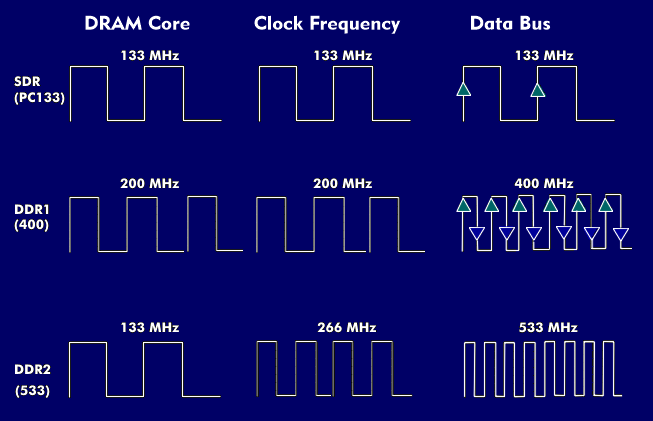double date rate synchronous DRAM (DDR-SDRAM)
DDR(Double Date Rate) technology was developed for Synchronous Dynamic RAMs( SDRAM) to double the data transfer rate. With this technology, the clock frequency from the Front Side Bus( FSB) is used for data transfer during the rising and falling clock edges, which corresponds to a doubling of the relative clock frequency and thus a doubling of the memory bandwidth. The DDR process was developed in 1999, is freely available and is not subject to licensing.
The DDR technology is constantly being developed further towards higher clock frequencies and lower supply voltages. For this reason, the basic DDR technology also carries the designation DDR1 with 2.5 V (2V5) supply voltage, followed by DDR2 with 1.8 V (1V8) and DDR3 with only 1.5 V (1V5) or as LPDDR3 in the Low Power DDR technology( LPDDR), with 1.2 V (1V2) supply voltage. The bus width is 64 bits for all DDR variants.
The successor technology to DDR3 is DDR4. It is a low-voltage technology that operates at 1.2 V and 1.05 V. The clock frequencies of DDR4 RAMs are 1,333 MHz, 1,600 MHz, 2,133 MHz and 2,666 MHz.
DDR technology is standardized by the Joint Electron Device Engineering Council( JEDEC).

